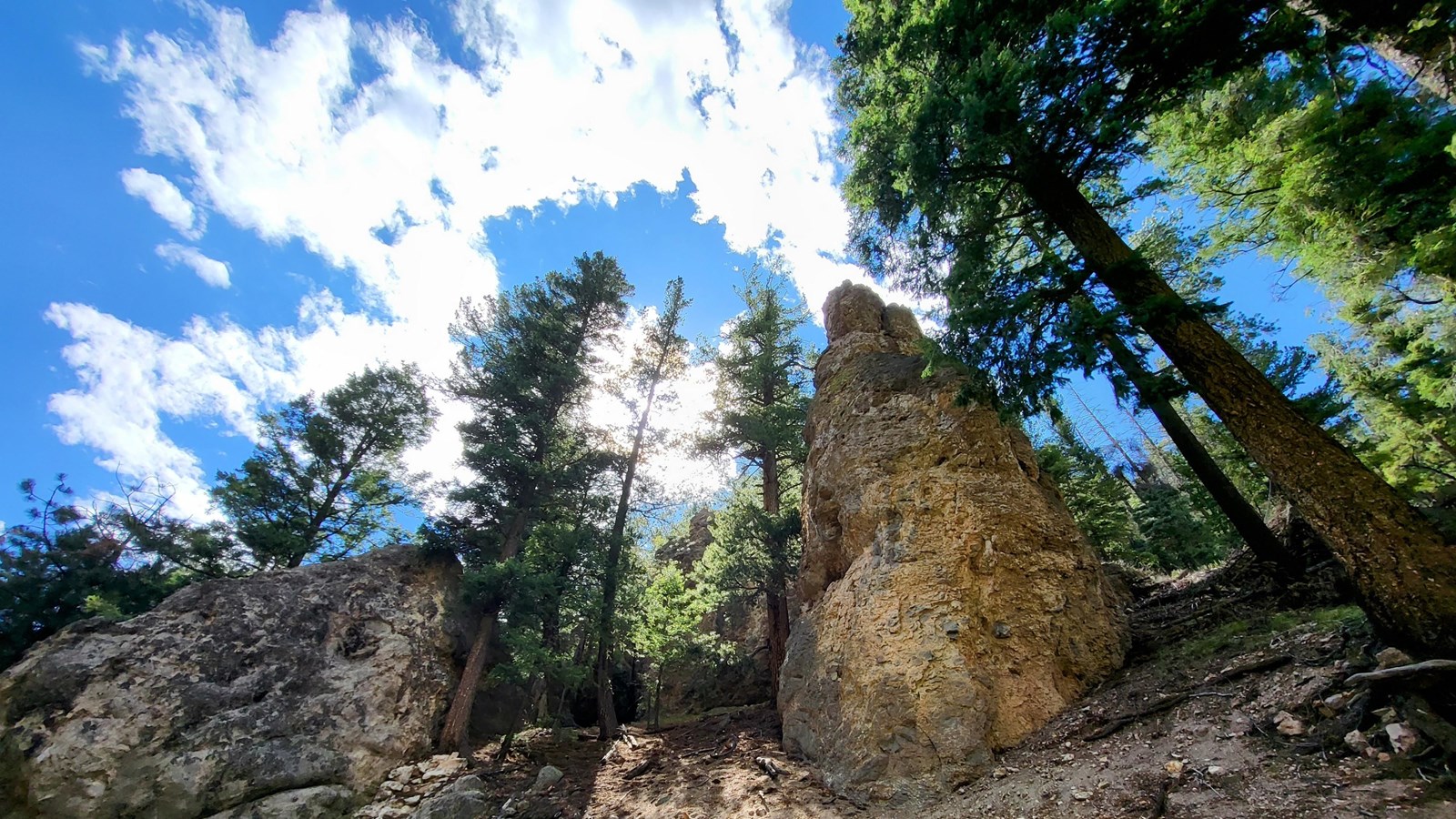Last updated: December 11, 2024
Place
Stop 2: Tuff Spires

NPS
The rocks to your left are the 1.25 million year old Deer Canyon Member, which is made up of tuff and rhyolite. A tuff is a rock that is formed during and immediately after a violent volcanic eruption. This tuff is composed of rock crystals such as quartz and sanidine feldspar, chunks of pre-existing rock forced up during the explosion, and volcanic ash that either fell out of the air or was deposited by ground-hugging pyroclastic flows. Rhyolite is a light-colored, silica-rich rock that solidified from molten rock flowing out on the ground. Both rhyolite and tuff are thought to have “leaked” out of the ground during the formation of the resurgent dome, Redondo Peak. Redondo Peak was formed after the large explosive eruption that formed Valles Caldera. It was formed when the caldera floor was pushed up, probably by magma. So, Valles Caldera was formed first by an enormous explosion, then the resurgent dome, Redondo Peak, was formed, and during the formation of the resurgent dome, lava leaked out and ash eruptions formed the tuff. Rocks really do have amazing stories to tell!
Sulphur Creek is now to your right, and you are walking along a fault. The geologic definition of a fault is a break in rock along which movement has taken place. In this case, the block of rock to your right has moved down relative to the rock on your left. You can think of the downthrown block sliding down the sloped fault, causing the surface to extend. This type of fault is called a “normal” fault. When movement along a fault occurs quickly, an earthquake occurs.
Sulphur Creek is now to your right, and you are walking along a fault. The geologic definition of a fault is a break in rock along which movement has taken place. In this case, the block of rock to your right has moved down relative to the rock on your left. You can think of the downthrown block sliding down the sloped fault, causing the surface to extend. This type of fault is called a “normal” fault. When movement along a fault occurs quickly, an earthquake occurs.
